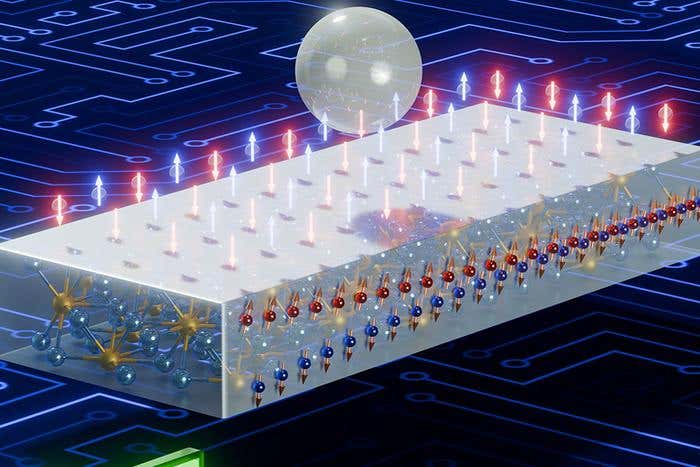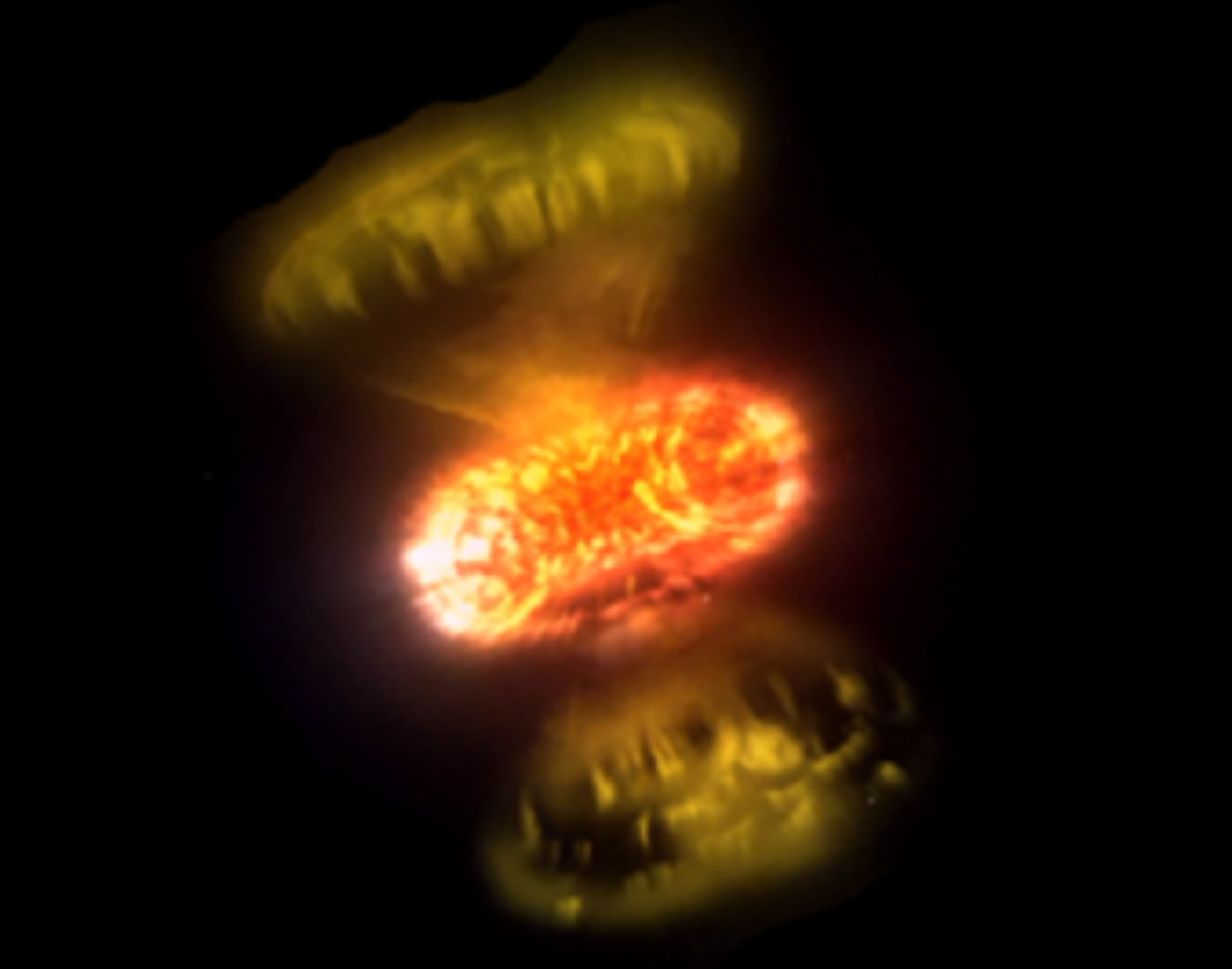New Nickel-Tungsten Alloy Powers Greener, Faster Memory Chips
Scientists discover Ni₄W, a low-cost alloy that boosts memory efficiency and cuts power use in future electronic devices.

New research on Ni₄W offers faster, energy-saving spintronic memory for future electronics. (CREDIT: University of Minnesota Twin Cities)
In a world where electronic devices continue to shrink and demands for faster, more energy-efficient memory increase, scientists have uncovered a promising material that could reshape the future of technology.
Researchers at the University of Minnesota Twin Cities have found a new way to control magnetization in electronic memory using a metal alloy called nickel-tungsten (Ni₄W). This material not only improves efficiency but also offers a path to more sustainable electronics.
The research, published in the journal Advanced Materials, shows how Ni₄W can outperform many current materials used in spintronics—a field of electronics that uses the spin of electrons, rather than just their charge, to store and process information. The results could bring significant improvements to devices like smartphones, smartwatches, and data centers.
What Makes Ni₄W Different
At the core of this discovery is spin-orbit torque (SOT), a physical mechanism that changes the direction of magnetization inside a material. This process is critical for next-generation memory and logic devices.
In most traditional SOT materials, such as heavy metals or topological insulators, high crystal symmetry restricts the spin direction to lie only in the plane of the material. That limits how magnetization can be manipulated, and usually requires an external magnetic field to function.
Ni₄W, on the other hand, has a low-symmetry crystal structure. This unique feature allows it to create spin currents that point in multiple directions—including out-of-plane directions that standard materials can’t reach. This enables something called "field-free switching," which eliminates the need for an external magnetic field when changing the magnetic state. That means simpler devices that require less energy to operate.
Related Stories
- Laser-excited thorium-229 pioneers major breakthrough in dark matter detection
- New EV battery tech could power cars for up to 1 million kilometers
- Scientists discover the secret to making robots seem real
According to Yifei Yang, a Ph.D. student and co-first author, “Unlike conventional materials, Ni₄W can generate spin currents in multiple directions.” He added that this allows “‘field-free’ switching of magnetic states without the need for external magnetic fields.”
Higher Efficiency and Lower Energy Use
One of the major challenges in spintronics has been improving the efficiency of SOT. Many materials tested so far haven't delivered the performance needed for real-world devices. But the University of Minnesota researchers reported an impressive SOT efficiency of 0.3 in Ni₄W at room temperature, using second harmonic Hall measurements.
When layered with tungsten, the material performed even better. In a 5-nanometer W/Ni₄W stack, the SOT efficiency shot up to 0.73. This might be due to interfacial effects between the materials or other external factors. It suggests a promising way to improve performance using common metals and simple layering. “Ni₄W reduces power usage for writing data, potentially cutting energy use in electronics significantly,” said Jian-Ping Wang.
With less power needed to change the magnetic state of the material, devices made from Ni₄W could use much less electricity. This could make a big difference for large systems like data centers, which consume vast amounts of energy, and even for small devices like smartwatches that rely on battery life.
Affordable and Scalable for Industry
Another advantage of Ni₄W is its practicality. It’s made from common, low-cost metals—nickel and tungsten—and can be created using well-known industrial processes. That makes it easier for manufacturers to adopt the technology and begin building devices with this material. “We are very excited to see that our calculations confirmed the choice of the material and the SOT experimental observation,” said Seungjun Lee, a postdoctoral researcher and co-first author.
In contrast to some advanced materials that are expensive or difficult to work with, Ni₄W could fit smoothly into existing production lines. That would make it easier to introduce this breakthrough into consumer devices, helping bring smarter and more sustainable electronics to the mass market.
The Road Ahead
The research team isn’t stopping here. Their next step is to make even smaller devices using Ni₄W. The goal is to continue shrinking the components while maintaining or improving performance. If they succeed, the material could become a key part of the next wave of miniaturized electronics.
Their discovery also opens the door to new research in low-symmetry materials. These materials, like Ni₄W, could hold the key to unlocking powerful spin currents and new ways to manipulate magnetism at the atomic level.
For now, Ni₄W is showing great promise. It’s rare to find a material that checks all the boxes—efficiency, low cost, easy production, and better performance. The ability to switch magnetic states without external fields, and to do so at high efficiency, gives this alloy a strong chance of changing the game in spintronics.
As the team continues its work, the rest of the world waits for smaller, faster, and greener devices powered by this breakthrough in magnetic control.
Note: The article above provided above by The Brighter Side of News.
Like these kind of feel good stories? Get The Brighter Side of News' newsletter.



